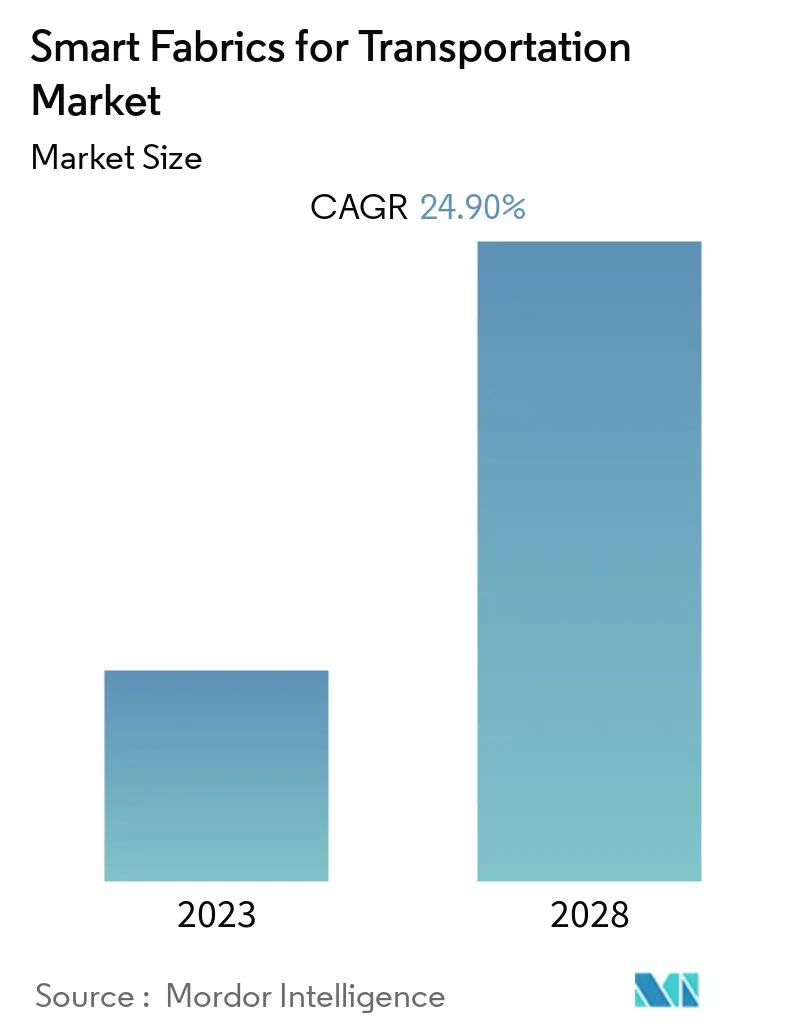Market Size of Smart Fabrics for Transportation Industry

| Study Period | 2018 - 2028 |
| Base Year For Estimation | 2021 |
| CAGR | 24.90 % |
| Fastest Growing Market | Asia Pacific |
| Largest Market | North America |
| Market Concentration | Low |
Major Players
*Disclaimer: Major Players sorted in no particular order |
Need a report that reflects how COVID-19 has impacted this market and its growth?
Smart Fabrics for Transportation Market Analysis
The market for smart fabrics for transportation was valued at USD 0.61 billion in 2020 and expected to reach USD 2.46 billion by 2026 and grow at a CAGR of 24.9% over the forecast period (2021 - 2026). The technological advancement in the electronics industry has changed the way we do and perceive things. The Internet of Things has connected everything. Smart fabrics are an important part of this technological advancement and may play a very crucial role in the future, with applications in the transportation industry.
- With the miniaturization of electronic components, coupled with the emergence of advanced polymers, is driving the market forward. The use of fabrics in automobiles is not only restricted to the upholstery, but they are also used in floor mats, the interior ceiling, seat belt webbings, interior door panels, steering wheel, and gear shift covers.
- Fabrics are not only meant only for the outward surfaces, which are visible to the eye but are also used in making of insulation for thermal control, inside the vehicle. The versatile nature of these fabrics has made them a key component of automobiles, which is driving the market forward.
- With the development of fabrics with antistatic properties, tremendous stain proof capabilities and the ability of fabrics to interact with the environment, which helps in the regulation of temperature, are also offered. These properties of smart fabrics have enabled their use in automotive vehicles.
